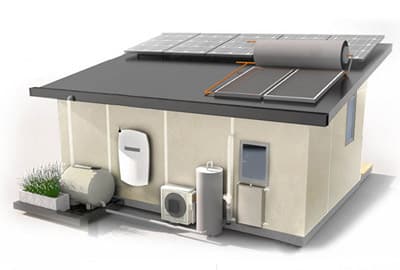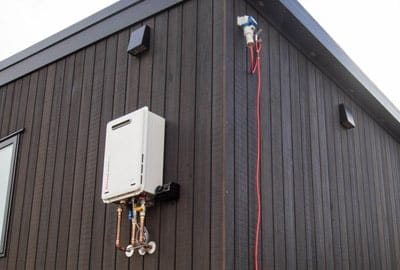





A link to download your FREE brochure will be in your inbox in 3 minutes



















The final price may vary based on project specifics.
To get a free accurate quote tailored to your needs, book a consultation with us today!

The price per square foot provided is an average and may vary depending on project-specific details such as materials, location, complexity, and other factors. Actual costs may differ from the average provided.
It is recommended to obtain a detailed quote based on the specific requirements of your project.

Please note that the monthly payment displayed on this page is an estimate and is subject to variation based on the selected loan product, applicants credit score, loan amount, and other financial details. Actual monthly payment may differ from the estimate provided.
It is recommended to seek advice from a financial advisor or loan officer to obtain precise payment information tailored to individual circumstances.
 Your Trusted
Local Contractor
Your Trusted
Local Contractor

When we imagine the idea of a permanent tiny house or a tiny house on wheels, many questions flood our minds. One of the most common is, how do tiny homes get electricity?
Another often asked question is about the utilities that allow them to function year-round. Do they hook up like traditional houses, or is there some off-grid magic at play? Let's delve into the world of tiny houses and their utilities.
One of the most common ways tiny homes source energy is through solar power. A tiny home might have solar panels installed on the roof. Such a solar system captures solar energy, which is then stored in batteries. In instances where the sun isn’t enough, wind power can also be a supplementary source, although this is less common. The energy from the solar panels and wind can then be converted using an inverter to power lights, appliances, and more.
That is, if in the case of a traditional house, property owners spend a lot of money on utility costs and do not follow the environmentally friendly lifestyle, then in the scenario with a small house, utility bills are reduced due to solar power and nature is cleaned.
Many tiny homes, especially those located near urban areas, might decide to connect to the power grid. This can be as simple as using an extension cord to plug into a main house or guest house on the same property. Or, for those in RV parks, there might be dedicated hookups available.
For the adventurous spirits who want their tiny house to be free from urban ties and have a strong desire to get rid of all extension cord systems and wires that encircle the whole house from the concrete pad in the foundation to the attic, going off-grid is the choice. This might involve a combination of solar power, wind power, and sometimes even a generator.
Off grid water solutions, for example, the ability to collect rainwater, are also popular among these enthusiasts.
Just like with electricity, tiny houses have a few methods of getting water.
Many tiny homes will simply connect to city water and city sewer systems. This ensures a steady supply of fresh water and an easy way to manage waste water, primarily black water, which accumulates in the toilet of the tiny house.
For those tiny homes that are off the beaten path, there are a few off grid water solutions. Collecting rainwater is a popular method. This water can be used in everything from the kitchen sink to the toilet. For wastewater, septic systems under the ground or composting toilets can become a great pick. In particular, these methods are relevant for tiny houses on wheels in RV parks, because in such a home it is impossible to extract water from the ground or connect to the main house.
Therefore, to have enough water, including hot water in the cold season, it is necessary to apply these methods, including water heaters.
This is an essential consideration. How much electricity does a tiny house typically use? And how much power is required to run it? While the space is condensed, many appliances and utilities work on energy, such as water heaters, lights, and clothes dryers. Power requirements will vary based on the appliances in the house and the habits of the inhabitants.
Before you decide to install solar panels on your tiny home or hook it up to the city water supply, it's essential to note that there might be building codes and regulations to consider. Always check with local authorities before making modifications.
This involves a blend of grid power and off-grid options. Solar systems with inverters and batteries are popular. But in places where there's minimal sunlight, especially during certain times of the year, connecting to the power grid or using a generator is common.
Every appliance in a tiny home, from cooking gadgets to heating systems, has unique power and electricity needs. While most tiny houses might forgo larger appliances like traditional dryers, there’s still a need to power things like fridges, stoves, and systems that generate heat. In addition, it is impossible to imagine both a permanent and tiny house on wheels without the Internet, and in this matter there is also a great choice of connections from cable hookup system to wireless fiber coverage.

To wrap up, how tiny homes get electricity and water varies widely based on the type of house, its location, and the preferences of the owner. Whether you're looking to build your own tiny house or are just curious about the tiny house phenomenon, understanding the intricacies of their utilities is fascinating. As this movement grows, innovations in how we power and provide water to these homes are sure to evolve.
The world of tiny houses has brought about a fresh wave of questions, especially when it comes to understanding their utilities and how tiny homes get electricity. Here, we'll expand on some of these pressing questions.
Most tiny houses utilize a hybrid approach to meet their power needs. Solar panels are often a favored choice due to the independence they provide. A tiny home equipped with solar panels harnesses solar power directly from the sun, converting it to electricity for daily use. This solar system usually involves batteries to store energy. However, depending on the location and the availability of sunlight, some may decide to connect to the power grid. This ensures a consistent supply of electricity, especially during cloudy days or in areas with limited sunlight. In addition to solar and grid connections, others might explore alternative solutions like wind power, particularly if they're situated in a windy location. Generators also come in handy for those sporadic moments when both solar and grid power might not suffice.
When considering how much electricity a tiny house requires, the answer can vary widely. While tiny houses, by definition, have limited space which often translates to reduced power needs compared to traditional houses, other factors come into play. The overall cost will largely hinge on your geographical location (as power costs vary), the source of power you’re tapping into (whether solar, grid, or a generator), and the efficiency and number of your appliances. For instance, state-of-the-art appliances that consume minimal power can significantly reduce monthly bills. Additionally, while solar power systems might have an upfront cost, they can offer long-term savings, especially if you reside in a sun-rich area.
The dream of going completely off-grid with solar panels is attainable, but its feasibility is heavily influenced by your specific location and energy demands. If your tiny home is located in a region blessed with abundant sunlight, then a well-structured solar system can potentially power your home throughout the year. However, in regions with prolonged cloudy days or longer winters, relying solely on solar power might not be sufficient. In such scenarios, you might find the need to occasionally hook up to the power grid or employ a generator to fill the energy gaps.
The management of wastewater in tiny homes is as diverse as their designs. Some homeowners opt for the simplicity of connecting their homes to the city sewer system. This ensures efficient waste management, akin to traditional houses. However, those who position their tiny houses in more remote locations, away from urban utilities, might gravitate towards septic systems. These systems are designed to handle waste over a longer duration before requiring maintenance. Another eco-friendly option is composting toilets. They significantly reduce the amount of waste water produced, making them a popular choice among the environmentally conscious tiny house community.
Get a First Look at Real ADU Projects